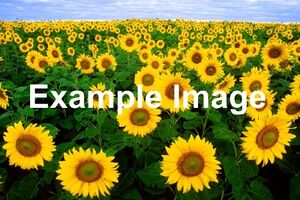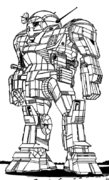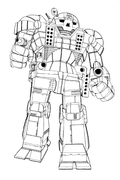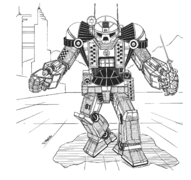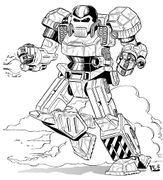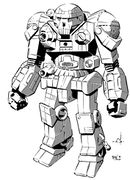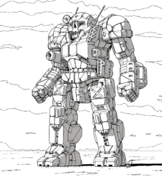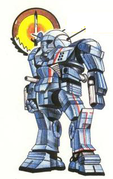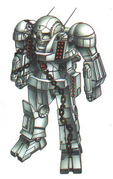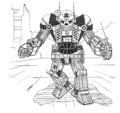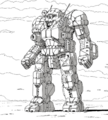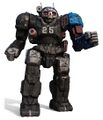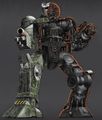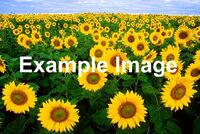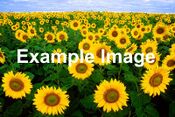Difference between revisions of "Help:Images"
m (updating) |
m (updating) |
||
| Line 12: | Line 12: | ||
Other formats used on the BattleTechWiki are: | Other formats used on the BattleTechWiki are: | ||
| − | * <code>.svg</code> - scalable image in the ''Scalable Vector Graphics'' format (specified by the ''W3 Consortium''). | + | * <code>.svg</code> or <code>.svgx<//code> - scalable image in the ''Scalable Vector Graphics'' format (specified by the ''W3 Consortium''). |
<!-- * <code>.tiff</code> - Tagged image format. Often used for high-resolution archival photographs. Often used with {{ll|Extension:PagedTiffHandler}}. | <!-- * <code>.tiff</code> - Tagged image format. Often used for high-resolution archival photographs. Often used with {{ll|Extension:PagedTiffHandler}}. | ||
* <code>.ogg</code>, <code>.oga</code>, <code>.ogv</code> - Ogg multimedia (audio or video). Not an image format, but treated similarly. Often used with {{ll|Extension:TimedMediaHandler}} | * <code>.ogg</code>, <code>.oga</code>, <code>.ogv</code> - Ogg multimedia (audio or video). Not an image format, but treated similarly. Often used with {{ll|Extension:TimedMediaHandler}} | ||
Revision as of 18:30, 4 January 2024
This page explains the image syntax when editing the wiki.
Contents
Supported media types for images
The following file formats are supported by default:
.jpgor.jpeg- bitmap image compressed in the standard JPEG format (this lossy format is most suitable for photographs)..png- bitmap image in the Portable Network Graphics format (specified by the W3 Consortium)..gif- bitmap image in the legacy Graphics Interchange Format..webp- WebP supports both lossy and lossless compression while reducing image size by up to 45%.
Other formats used on the BattleTechWiki are:
.svgor.svgx<//code> - scalable image in the Scalable Vector Graphics format (specified by the W3 Consortium).
Rendering a single image
Syntax
The full syntax for displaying an image is:
[[File:filename.extension|options|caption]]
where options can be empty or containing one or more of the following lower-case words, separated by pipes (|):
- Format option: border, and one of frameless, frame (or framed), or thumb (or thumbnail). Note: border can be used in combination with frameless but will be ignored if used with one of the other options.
- Controls how the rendered image is formatted and embedded in the rest of the page.
- Resizing option: one of
- {width}px — Resizes the image to fit within the given maximum width in pixels, without restricting its height. (Only whole-number pixel values are supported. A space character between the width value and "px" is permitted.)
- x{height}px — Resizes the image to fit within the given maximum height in pixels, without restricting its width. Only whole-number pixel values are supported. A space character between the height value and "px" is permitted.
- {width}x{height}px — Resizes the image to fit within the given width and height in pixels. Only whole-number pixel values are supported. A space character between the width value and "px" is permitted.
- upright — Resizes an image to a multiple of the user's thumbnail size preferences – or the default thumbnail size, for logged-out users or logged-in users who have not changed their preferences – to fit within reasonable dimensions. This option is often useful for images whose height is larger than their width. Requires either thumb or frameless. Setting
|upright=1.0| will display the image at the user's default image width. |upright=2.0| will display the image at double the user's default width.
- The image will always retain its aspect ratio.
- Images in non-scalable media types can be reduced in size, but not increased; e.g., bitmap images cannot be scaled up.
- The
upright setting does not require an equals sign, i.e. |upright 2.0| works the same as |upright=2.0|.
- When used without a value or an equals sign (e.g.,
|upright|), defaults to |upright=0.75| (although |upright=| is the same as |upright=1.0|)
- The default maximum size depends on the format and the internal image dimensions (according to its media type).
- Horizontal alignment option: one of left, right, center, none. If multiple of these options are present, only the first one will be used
- Controls the horizontal alignment (and inline/block or floating styles) of the image within a text (no default value).
- Vertical alignment option: one of baseline, sub, super, top, text-top, middle, bottom, text-bottom
- Controls the vertical alignment of a non-floating inline image with the text before or after the image, and in the same block (the default vertical alignment is middle).
- Link option: one of
- link={target} — Allows to change the target (to an arbitrary page title, or URL) of the generated link, activable on the rendered image surface; e.g.
[[File:Example.jpg|20px|link=http://www.wikipedia.org]] renders as  (external link), or
(external link), or [[File:Example.jpg|20px|link=MediaWiki]] renders as  (internal link).
(internal link).
- link= (with an empty value) — Displays an image without any activable link; e.g.
[[File:Example.jpg|20px|link=]] renders as  .
.
- If there is a space character between
link and the equals sign, the link statement will be treated as a caption.
- Including some HTML character equivalents, like
%22 for ", can cause the link statement to be treated as a caption.
- Other specific options:
- alt={alternative text} — Defines the alternative text (maps to the HTML attribute
alt="..." of the generated <img /> element) of an image that will be rendered if either the referenced image cannot be downloaded and embedded, or if the support media must use the alternative description text (e.g. when using a Braille reader or with accessibility options set by the user in its browser).
- If there is a space character between
alt and the equals sign, the alt statement will be treated as a caption.
- class={html class} — Defines classes (maps to the HTML attribute
class="..." of the generated <img /> element).
- lang={language code} — For SVG files containing <switch> statements varying on a systemLanguage attribute, selects what language to render the file in. The default is the page language (defaults to project default language on most projects).
- Other specific notes:
- If a parameter does not match any of the other possibilities, it is assumed to be the caption text.
- If more than one non-parameter string is present, the final non-parameter string will be used as the caption.
- Caption text shows below the image in thumb and frame formats, or as tooltip text in any other format.
- Caption text displayed in the thumb and frame formats may contain wiki links and other formatting.
- If 'alt' is not specified and a caption is provided, the alternative text will be created automatically from the caption, stripped of formatting, except when in thumb or frame mode since the caption is already readable by screen readers in that case.
Format
The following table shows the effect of all available formats.
Description
You type
You get
no format specified
Rendered as a floating block: no
Rendered inline: yes
Rendered caption: no
... text text text
[[File:example.jpg|caption]]
text text text ...
... text text text
border results in a very small gray border
Rendered as a floating block: no
Rendered inline: yes
Rendered caption: no
... text text text
[[File:example.jpg|border|caption]]
text text text ...
... text text text
frameless, like thumbnail, respect user preferences for image width, but without border and no right float
Rendered as a floating block: no
Rendered inline: yes
Rendered caption: no
... text text text
[[File:example.jpg|frameless|caption]]
text text text ...
... text text text
frameless and border
Rendered as a floating block: no
Rendered inline: yes
Rendered caption: no
... text text text
[[File:example.jpg|frameless|border|caption]]
text text text ...
... text text text
frame
Rendered as a floating block: yes
Rendered inline: no
Rendered caption: yes
... text text text
[[File:example.jpg|frame|caption]]
text text text ...
... text text text
text text text ...
thumb or thumbnail
Rendered as a floating block: yes
Rendered inline: no
Rendered caption: yes
... text text text
[[File:example.jpg|thumb|caption]]
text text text ...
... text text text
text text text ...
When the height of an image in thumbnail is bigger than its width (i.e. in portrait orientation rather than landscape) and you find it too large, you may try the option upright=N, where N is the image's aspect ratio (its width divided by its height, defaulting to 0.75).
The alternative is to specify the desired maximum height (in pixels) explicitly.
Note that by writing thumb={filename}, you can use a different image for the thumbnail.
Size and frame
Among different formats, the effect of the size parameter may be different, as shown below.
- For how it appears when its size is not specified, see Format section above.
- When the format is not specified, or only
bordered, the size can be both reduced and enlarged to any specified size.
- In the examples below, the original size of the image is 400×267 pixels.
- An image with
frame always ignores the size specification; the original image will be reduced if it exceeds the maximum size defined in user preferences, and the page information will display a Linter error.
- The size of an image with
thumb or frameless can be reduced, but cannot be enlarged beyond the original size of the image.
Format
Reduced
Enlarged
(not specified)
[[File:example.jpg|50px]]
[[File:example.jpg|500px]]
border
[[File:example.jpg|border|50px]]
[[File:example.jpg|border|500px]]
frame
[[File:example.jpg|frame|50px]]
[[File:example.jpg|frame|500px]]
thumb
[[File:example.jpg|thumb|50px]]
[[File:example.jpg|thumb|500px]]
frameless
[[File:example.jpg|frameless|50px]]
[[File:example.jpg|frameless|500px]]
Horizontal alignment
Note that when using the frame or thumb[nail] formats, the default horizontal alignment will be right for left-to-right languages, and left for right-to-left languages.
Description
You type
You get
no horizontal alignment specified, or default alignment
Rendered as a floating block: no
Rendered inline: yes
... text text text
[[File:example.jpg|100px|caption]]
text text text ...
... text text text
specify horizontal alignment as: none
Rendered as a floating block: no
Rendered inline: no
... text text text
[[File:example.jpg|none|100px|caption]]
text text text ...
... text text text
text text text ...
specify horizontal alignment as: center
Rendered as a floating block: no
Rendered inline: no
... text text text
[[File:example.jpg|center|100px|caption]]
text text text ...
... text text text
text text text ...
specify horizontal alignment as: left
Rendered as a floating block: yes
Rendered inline: no
... text text text
[[File:example.jpg|left|100px|caption]]
text text text ...
... text text text
text text text ...
specify horizontal alignment as: right
Rendered as a floating block: yes
Rendered inline: no
... text text text
[[File:example.jpg|right|100px|caption]]
text text text ...
... text text text
text text text ...
Vertical alignment
The vertical alignment options take effect only if the image is rendered as an inline element and is not floating.
They alter the way the inlined image will be vertically aligned with the text present in the same block before and/or after this image on the same rendered row.
Note that the rendered line of text where inline images are inserted (and the lines of text rendered after the current one) may be moved down (this will increase the line-height conditionally by additional line spacing, just as it may occur with spans of text with variable font sizes, or with superscripts and subscripts) to allow the image height to be fully displayed with this alignment constraint.
Toggle source code view
<p style="border:1px solid #AAA;padding:0;font-size:150%;line-height:2">
<span style="background:#FFF;color:#000;text-decoration:overline"><u><del>text</del>
'''top:''' [[File:Example.jpg|20px|top]] [[File:Example.jpg|40px|top]] [[File:Example.jpg|100px|top]]
<del>text</del></u></span></p>
<p style="border:1px solid #AAA;padding:0;font-size:150%;line-height:2">
<span style="background:#FFF;color:#000;text-decoration:overline"><u><del>text</del>
'''text-top:''' [[File:Example.jpg|20px|text-top]] [[File:Example.jpg|40px|text-top]] [[File:Example.jpg|100px|text-top]]
<del>text</del></u></span></p>
<p style="border:1px solid #AAA;padding:0;font-size:150%;line-height:2">
<span style="background:#FFF;color:#000;text-decoration:overline"><u><del>text</del>
<sup>super:</sup> [[File:Example.jpg|20px|super]] [[File:Example.jpg|40px|super]] [[File:Example.jpg|100px|super]]
<del>text</del></u></span></p>
<p style="border:1px solid #AAA;padding:0;font-size:150%;line-height:2">
<span style="background:#FFF;color:#000;text-decoration:overline"><u><del>text</del>
'''baseline:''' [[File:Example.jpg|20px|baseline]] [[File:Example.jpg|40px|baseline]] [[File:Example.jpg|100px|baseline]]
<del>text</del></u></span></p>
<p style="border:1px solid #AAA;padding:0;font-size:150%;line-height:2">
<span style="background:#FFF;color:#000;text-decoration:overline"><u><del>text</del>
<sub>'''sub:'''</sub> [[File:Example.jpg|20px|sub]] [[File:Example.jpg|40px|sub]] [[File:Example.jpg|100px|sub]]
<del>text</del></u></span></p>
<p style="border:1px solid #AAA;padding:0;font-size:150%;line-height:2">
<span style="background:#FFF;color:#000;text-decoration:overline"><u><del>text</del>
'''default:''' [[File:Example.jpg|20px]][[File:Example.jpg|40px]] [[File:Example.jpg|100px]]
<del>text</del></u></span></p>
<p style="border:1px solid #AAA;padding:0;font-size:150%;line-height:2">
<span style="background:#FFF;color:#000;text-decoration:overline"><u><del>text</del>
'''middle:''' [[File:Example.jpg|20px|middle]] [[File:Example.jpg|40px|middle]] [[File:Example.jpg|100px|middle]]
<del>text</del></u></span></p>
<p style="border:1px solid #AAA;padding:0;font-size:150%;line-height:2">
<span style="background:#FFF;color:#000;text-decoration:overline"><u><del>text</del>
'''text-bottom:''' [[File:Example.jpg|20px|text-bottom]] [[File:Example.jpg|40px|text-bottom]] [[File:Example.jpg|100px|text-bottom]]
<del>text</del></u></span></p>
<p style="border:1px solid #AAA;padding:0;font-size:150%;line-height:2">
<span style="background:#FFF;color:#000;text-decoration:overline"><u><del>text</del>
'''bottom:'' [[File:Example.jpg|20px|bottom]] [[File:Example.jpg|40px|bottom]] [[File:Example.jpg|100px|bottom]]
<del>text</del></u></span></p>
To show the alignment result more clearly, the text spans are overlined and underlined, the font-size is increased to 200%, and the paragraph block is outlined with a thin border; additionally images of different sizes are aligned:
Notes:
- The "middle" vertical alignment position of the image (which is also the default) usually refers to the middle between the x-height and the baseline of the text (on which the vertical middle of the image will be aligned, and on which usually the text may be overstroke), but not to the middle of the line-height of the font-height that refers to the space between the "text-top" and "text-bottom" positions ; the font-height excludes:
- the additional line separation spacing normally divided equally into two line-margins (here 0.5em, according to line-height set to 200%) above and below the font-height).
- the additional line spacing which may be added by superscripts and subscripts.
- However, if the image height causes its top or bottom position to go above or below the normal full line-height of text, the middle position will be adjusted after the increasing the top and/or bottom line-margins so that the image can fit and align properly, and all images (including those with smaller heights) will be vertically centered on the adjusted middle position (for computing the effective line-height, the text of each rendered row with the larger font-height will be considered).
- The "text-top" and "text-bottom" alignment positions also excludes the extra line spacing added by superscripts and subscripts, but not the additional line-spacing defined by the line-height.
- The "top" and "bottom" alignment positions take into account all these extra line spacings (including superscripts and subscripts, if they are present in a rendered line span). When the image alignment constrains the image to grow above or below the normal line-spacing, and the image is not absolutely positioned, the image will cause the "top" and "bottom" positions to be adjusted (just like superscripts and subscripts), so the effective line-height between rendered lines of text will be higher.
- The "underline", "overline" and "overstrike" text-decoration positions should be somewhere within these two limits and may depend on the type and height of fonts used (the superscript and subscript styles may be taken into account in some browsers, but usually these styles are ignored and the position of these decorations may not be adjusted); so these decorations normally don't affect the vertical position of images, relatively to the text.
Stopping the text flow
On occasion it is desirable to stop text (or other inline non-floating images) from flowing around a floating image.
Depending on the web browser's screen resolution and such, text flow on the right side of an image may cause a section header (for instance, == My Header ==) to appear to the right of the image, instead of below it, as a user may expect.
The text flow can be stopped by placing <br clear=all> (or if you prefer, <div style="clear: both"></div>) before the text that should start below the floating image.
(This may also be done without an empty line by wrapping the section with the floating images with <div style="overflow: hidden">…</div>, which clears all floats inside the div element.)
All images rendered as blocks (including non-floating centered images, left- or right-floating images, as well as framed or thumbnailed floating images) are implicitly breaking the surrounding lines of text (terminating the current block of text before the image, and creating a new paragraph for the text after them).
They will then stack vertically along their left or right alignment margin (or along the center line between these margins for centered images).
Altering the default link target
The following table shows how to alter the link target (whose default is the image description page) or how to remove it.
Changing the link does not alter the format described in the previous sections.
Description
You type
You get
internal link
... text text text
[[File:example.jpg|link=Main Page|caption]]
text text text ...
... text text text
external link
... text text text
[[File:example.jpg|link=http://wikipedia.org/wiki/Test|caption]]
text text text ...
... text text text
no link (external or file page)
... text text text
[[File:example.jpg|link=|caption]]
text text text ...
... text text text
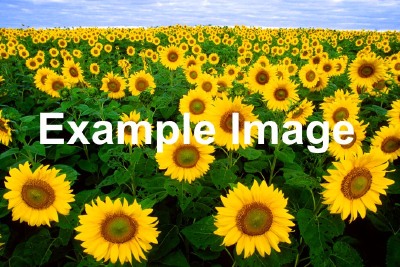 text text text ...
text text text ...
Warning:
- The licencing requirements on your wiki may not allow you to remove all links to the description page that displays the required authors attributions, the copyrights statements, the applicable licencing terms, or a more complete description of the rendered image (including its history of modifications).
- If you change or remove the target link of an image, you will then have to provide somewhere else on your page an explicit link to this description page, or to display the copyright and author statement and a link to the applicable licence, if they are different from the elements applicable to the embedding page itself.
- Your wiki policy may restrict the use of the alternate link parameter, or may even enforce a prohibition of alternate link parameters for embedded media files (in which case, the link parameter will be ignored), or may only accept them after validation by authorized users or administrators.
Rendering a gallery of images
Gallery syntax
It's easy to make a gallery of thumbnails with the <gallery> tag.
The syntax is:
<gallery>
File:file_name.ext|caption|alt=alt language
File:file_name.ext|caption|alt=alt language
{...}
</gallery>
Note that the image code is not enclosed in brackets when enclosed in gallery tags.
Captions are optional, and may contain wiki links or other formatting.
{{note|1=The words "center", "left", and "right" used as captions cause false-positive Linter errors.
Some of the parameters controlling thumb output can also be used here, specifically the ones that modify the file (as opposed to ones that control where in the page the image falls).
For example, with multi-paged media like pdfs, you can use code like page=4 and with videos you can use thumbtime=10.
The File: prefix can be omitted.
However, it is helpful to include it as an aid for quickly locating image specifiers in the wikitext (for example, when cleaning up page layout).
For example:
<gallery>
File:Example.jpg|Item 1
File:Example.jpg|a link to [[Help:Contents]]
File:Example.jpg
File:Example.jpg|alt=An example image. It has flowers
File:Example.jpg|''italic caption''
File:Example.jpg|Links to external website|link=https://example.com
File:Example.jpg|link=w:Main_Page|Internal link
Example.jpg|on page "{{PAGENAME}}"
</gallery>
is formatted as:
-
a link to Help:Contents
mode parameter
The mode parameter takes options as follows:
traditional is the original gallery type used by MediaWiki.nolines is similar to traditional, but with no border lines.packed causes images to have the same height but different widths, with little space between the images. The rows in this responsive mode organize themselves according to the width of the screen.packed-overlay shows the caption overlaid on the image, in a semi-transparent white box.packed-hover is similar to packed-overlay, but with the caption and box only showing up on hover.slideshow creates a slideshow of the images.
For example:
<gallery mode="packed-hover">
3025_Atlas1.jpg|Original AS7-D ''Atlas'' from ''[[Technical Readout: 3025|TRO:3025]]''
3050 Atlas.jpg|AS7-K ''Atlas'' from ''[[Technical Readout: 3050|TRO:3050]]''
3050U Atlas.jpg|AS7-K ''Atlas'' from ''[[Technical Readout: 3050 Upgrade|TRO:3050 Upgrade]]''
AS7-K2 Atlas.jpg|AS7-K2 ''Atlas'' from ''[[Technical Readout: 3085|TRO:3085]]''
Atlas 2.jpg|AS7-00 ''Atlas'' "Jurn" from ''[[Experimental Technical Readout: Periphery|XTRO:Periphery]]''
Atlas RGilClan v24.png|''Atlas'' from ''[[Recognition Guide: ilClan, vol. 24|RGilClan: vol. 24]]''
Camodavionbrigadeofguards.png|An ''Atlas'' in colors of [[Davion Assault Guards]] from ''[[Camo Specs]]''
Camokuritaghost2.png|An AS7-K ''Atlas'' of [[DCMS]] [[7th Ghost]] from ''[[Field Manual: Draconis Combine|FM:DC]]''
Atlas (Heimdall) BTLegends.jpg|[[Anastasius Focht|Anastasius Focht's]] ''Atlas'' ''Heimdall'' from ''[[BattleTech: Legends|BT:Legends]]''
Atlas (Solitude) BTLegends.jpg|[[Jonah Levin|Jonah Levin's]] ''Atlas'' C 2 ''Solitude'' from ''BT:Legends''
Atlas crosssection.jpg|Internal schematics of an ''Atlas'' from ''[[BattleTech: 25 Years of Art & Fiction|BT:25 Years]]''
</gallery>
Gives (mode: packed-hover):
-
Original AS7-D Atlas from TRO:3025
-
AS7-K Atlas from TRO:3050
-
AS7-K Atlas from TRO:3050 Upgrade
-
AS7-K2 Atlas from TRO:3085
-
AS7-00 Atlas "Jurn" from XTRO:Periphery
-
Atlas from RGilClan: vol. 24
-
An Atlas in colors of Davion Assault Guards from Camo Specs
-
Anastasius Focht's Atlas Heimdall from BT:Legends
-
Jonah Levin's Atlas C 2 Solitude from BT:Legends
-
Internal schematics of an Atlas from BT:25 Years
Examples of the other modes
mode="traditional"
-
Original AS7-D Atlas from TRO:3025
-
AS7-K Atlas from TRO:3050
-
AS7-K Atlas from TRO:3050 Upgrade
-
AS7-K2 Atlas from TRO:3085
-
AS7-00 Atlas "Jurn" from XTRO:Periphery
-
Atlas from RGilClan: vol. 24
-
An Atlas in colors of Davion Assault Guards from Camo Specs
-
Anastasius Focht's Atlas Heimdall from BT:Legends
-
Jonah Levin's Atlas C 2 Solitude from BT:Legends
-
Internal schematics of an Atlas from BT:25 Years
mode="nolines"
-
Original AS7-D Atlas from TRO:3025
-
AS7-K Atlas from TRO:3050
-
AS7-K Atlas from TRO:3050 Upgrade
-
AS7-K2 Atlas from TRO:3085
-
AS7-00 Atlas "Jurn" from XTRO:Periphery
-
Atlas from RGilClan: vol. 24
-
An Atlas in colors of Davion Assault Guards from Camo Specs
-
Anastasius Focht's Atlas Heimdall from BT:Legends
-
Jonah Levin's Atlas C 2 Solitude from BT:Legends
-
Internal schematics of an Atlas from BT:25 Years
mode="packed"
-
Original AS7-D Atlas from TRO:3025
-
AS7-K Atlas from TRO:3050
-
AS7-K Atlas from TRO:3050 Upgrade
-
AS7-K2 Atlas from TRO:3085
-
AS7-00 Atlas "Jurn" from XTRO:Periphery
-
Atlas from RGilClan: vol. 24
-
An Atlas in colors of Davion Assault Guards from Camo Specs
-
Anastasius Focht's Atlas Heimdall from BT:Legends
-
Jonah Levin's Atlas C 2 Solitude from BT:Legends
-
Internal schematics of an Atlas from BT:25 Years
mode="packed-overlay"
mode="packed-hover"
-
Original AS7-D Atlas from TRO:3025
-
AS7-K Atlas from TRO:3050
-
AS7-K Atlas from TRO:3050 Upgrade
-
AS7-K2 Atlas from TRO:3085
-
AS7-00 Atlas "Jurn" from XTRO:Periphery
-
Atlas from RGilClan: vol. 24
-
An Atlas in colors of Davion Assault Guards from Camo Specs
-
Anastasius Focht's Atlas Heimdall from BT:Legends
-
Jonah Levin's Atlas C 2 Solitude from BT:Legends
-
Internal schematics of an Atlas from BT:25 Years
Optional gallery attributes
The gallery tag itself takes several additional parameters, specified as attribute name-value pairs:
<gallery {parameters}>
{images}
</gallery>
caption="{caption}": (caption text between double quotes for more than a word) sets a caption centered atop the gallery. Only plain text may be used in the caption; formatting, templates and the like will not work.widths={width}px: sets the (max) widths of the images; the default value is 120px. (It has no effect if mode is set to one of the following: packed, packed-overlay, packed-hover, slideshow.) Note the plural: widths.heights={heights}px: sets the (max) heights of the images; the default value is 120px. (It has no effect if mode is set to slideshow.)perrow={integer}: sets the number of images per row. (It has no effect if mode is set to one of the following: packed, packed-overlay, packed-hover, slideshow.) 0 means automatically adjust based on width of screen.showfilename={anything}: Show the filenames of the images in the individual captions for each image (1.17+).mode={traditional|nolines|packed|packed-hover|packed-overlay|slideshow}: See section above (1.22+; 1.28+ for "slideshow").showthumbnails: For "slideshow" mode only, display the strip with image thumbnails below the slideshow by default (1.29+).
- Example 1
Syntax:
<gallery widths=300px heights=200px>
File:Example.jpg|Lorem ipsum
File:Example.jpg|Lorem ipsum dolor sit amet, consetetur sadipscing elitr, sed diam nonumy eirmod tempor invidunt ut
</gallery>
Result:
- Example 2
Syntax:
<gallery widths=60px heights=60px perrow=7 caption="sunflowers are groovy">
File:Example.jpg
File:Example.jpg
File:Example.jpg
File:Example.jpg
File:Example.jpg
File:Example.jpg
File:Example.jpg
File:Example.jpg
File:Example.jpg
File:Example.jpg
</gallery>
Result:
- sunflowers are groovy
Row of images that will wrap to browser width
One way that works for a row of images with varying widths is not to use "thumb" or "left" or "none".
If "thumb" is not used (and thus no captions) a row of images will wrap to the browser width.
If necessary, narrow the browser window to see the images wrap to the next row.
[[File:Example.jpg|220px]]
[[File:Example.jpg|100px]]
[[File:Example.jpg|150px]]
[[File:Example.jpg|250px]]
[[File:Example.jpg|200px]]
[[File:Example.jpg|50px]]
[[File:Example.jpg|220px]]
[[File:Example.jpg|175px]]
To wrap images of varying widths with captions it is necessary to use div HTML for an unordered list. Along with style="display: inline-block;". For more info and ideas see: Give Floats the Flick in CSS Layouts.
<div><ul>
<li style="display: inline-block;"> [[File:Example.jpg|thumb|none|220px|Caption 1]] </li>
<li style="display: inline-block;"> [[File:Example.jpg|thumb|none|100px|Caption 2]] </li>
<li style="display: inline-block;"> [[File:Example.jpg|thumb|none|150px|Caption 3]] </li>
<li style="display: inline-block;"> [[File:Example.jpg|thumb|none|250px|Caption 4]] </li>
<li style="display: inline-block;"> [[File:Example.jpg|thumb|none|200px|Caption 5]] </li>
<li style="display: inline-block;"> [[File:Example.jpg|thumb|none|50px|Caption 6]] </li>
<li style="display: inline-block;"> [[File:Example.jpg|thumb|none|220px|Caption 7]] </li>
<li style="display: inline-block;"> [[File:Example.jpg|thumb|none|175px|Caption 8]] </li>
</ul></div>
To align the top edge of images add the vertical-align command
<div><ul>
<li style="display: inline-block; vertical-align: top;"> [[File:Example.jpg|thumb|none|220px|Caption 1]] </li>
<li style="display: inline-block; vertical-align: top;"> [[File:Example.jpg|thumb|none|100px|Caption 2]] </li>
<li style="display: inline-block; vertical-align: top;"> [[File:Example.jpg|thumb|none|150px|Caption 3]] </li>
<li style="display: inline-block; vertical-align: top;"> [[File:Example.jpg|thumb|none|250px|Caption 4]] </li>
<li style="display: inline-block; vertical-align: top;"> [[File:Example.jpg|thumb|none|200px|Caption 5]] </li>
<li style="display: inline-block; vertical-align: top;"> [[File:Example.jpg|thumb|none|50px|Caption 6]] </li>
<li style="display: inline-block; vertical-align: top;"> [[File:Example.jpg|thumb|none|220px|Caption 7]] </li>
<li style="display: inline-block; vertical-align: top;"> [[File:Example.jpg|thumb|none|175px|Caption 8]] </li>
</ul></div>
Some wiki farms do not have all gallery options (such as "widths").
Also, sometimes one wants varying widths for images in a row.
Outside of a gallery, or the div HTML, it is impossible to have individual captions for images in a row of images that will wrap to the browser width.
Try it and see. Nothing else using wikitext works correctly. Images will either overlap stuff on the right, or force a horizontal scroll bar.
Using a left float ("left") for some images, combined with "none" for some of the images, will not work consistently either, especially if there is also a right sidebar of images.
Weird things will occur.
At narrower browser or screen widths an image out of the row may appear far down the page after the end of the right sidebar of images.
Link behavior
By default an image links to its file description page.
The "link=" option modifies this behavior to link to another page or website, or to turn off the image's linking behavior.
Display image, link it to another page or website
Use "link=" option to link image to another page or website:
Clicking on the below image will take you to BattleTechWiki:
[[File:MediaWiki-2020-icon.svg|50px|link=BattleTechWiki]]
Clicking on the below image will take you to example.com:
[[File:MediaWiki-2020-icon.svg|50px|link=http://example.com]]
Display image, turn off link
Use "link=" option with no value assigned to turn link off entirely; the below image is not a link:
[[File:MediaWiki-2020-icon.svg|50px|link=]]

Link to an image
Add : as a prefix to the link you need to create.
[[:File:MediaWiki-2020-icon.svg]]
[[:File:MediaWiki-2020-icon.svg|Wiki]]
Directly linking to an image
The above examples link to the image's description page.
To directly link to an image, the pseudo-namespace Media: can be used on MediaWiki pages:
[[Media:MediaWiki-2020-icon.svg]]
See also



